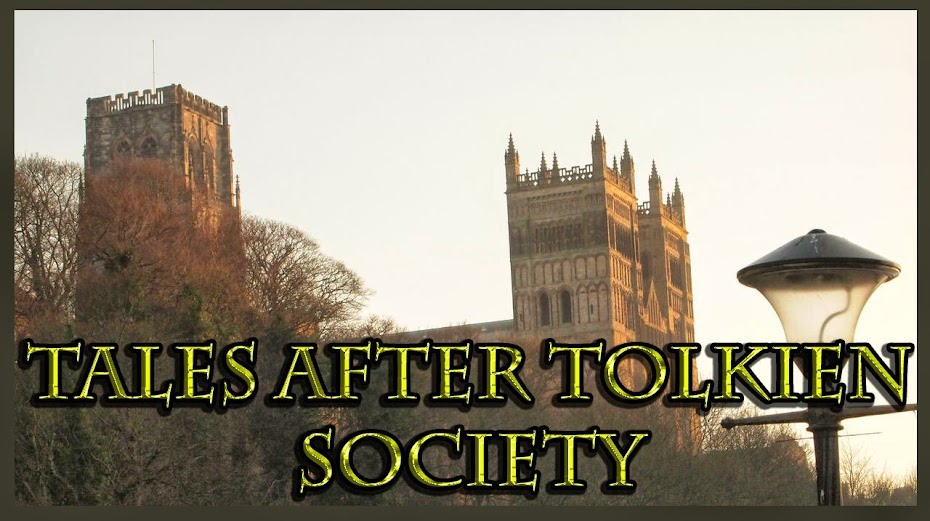Read the next entry in this series here.
“Bitterblooms”
Cosmos
1977
“Bitterblooms” is another story in which
Martin mixes his genres, this time all three—scifi, fantasy, and horror—in an
otherwise fairly traditional fairy story. Shawn gets lost in the woods in deep
winter, comes across a weird quirk of nature (not a fairy circle, but flowers
blooming where they shouldn’t), is taken into a place where time passes
differently and reality itself is suspect, then returns to real life some time
later, forever changed.
Obviously, because it’s Martin, it isn’t as
simple as all that. Shawn isn’t just lost; she’s under threat from vampires,
windwolves, and the planet itself. Much like Westeros, the season cycle in this
story is extreme, with winter—“deepwinter”—lasting years, even decades. Shawn
is sixteen and says deepwinter has lasted eight years so far. When her
companion dies from wounds sustained in a vampire attack, Shawn has to fend for
herself in the deep cold, not even daring to light a fire because it might draw
more vampires. She’s in serious danger of starving, freezing, or being attacked
when she comes upon the first flower, a tiny blue plant that shouldn’t exist in
this weather. Then she finds the spaceship, covered in flowers, just before she’s
attacked by a vampire.
~*~
“Kilmeny, Kilmeny, where have you been?
Lang hae we sought baith holt and den;
By linn, by ford, and green-wood tree,
Yet you are halesome and fair to see.
Where gat you that joup o’ the lily scheen?
That bonnie snood of the birk sae green?
And these roses, the fairest that ever were seen?
Kilmeny, Kilmeny, where have you been?”
--“Kilmeny,” James Hogg, 1813
~*~
Morgan rescues Shawn from the vampire and
takes her into the spaceship, and this is where the story appears to shift
entirely to science fiction, albeit still with some echoes of Celtic fairy
mythology. Morgan tells Shawn she came from the sky, that she is made of magic,
that she is related to Lilith and a slew of other mythological heroes from
Martin’s thousand worlds stories (which includes “Mistfall”). But Shawn
remembers a story from her childhood of an entire family who encountered Morgan
and thought they were safe and warm and well-fed, but were found later frozen
and starved to death, because of course fairy food is an illusion. Morgan
convinces Shawn that the food and warmth aren’t illusions, then takes her on a
whirlwind tour of the galaxy.
But of course Shawn isn’t allowed to leave
the ship because, as she discovers when Morgan makes a mistake, they’ve never
left the planet. The “window” is a viewing screen through which Morgan has
shown Shawn the universe, but they haven’t moved. So while the story appears to
go hard sci-fi for a bit, complete with space travel, it’s still not quite
there. Even the science fiction elements that still exist are covered with a
veneer of fantasy because Shawn doesn’t understand how any of this works, so it
all looks like magic to her, not to mention that Morgan keeps telling her it’s
magic. As far as Shawn knows, Morgan can change the time of day, the weather,
and the time of year, besides taking her to other planets. All of this combines
to keep her disoriented and trapped.
Shawn learns that the space travel has been a
lie when Morgan brings her some of the blue flowers when the ship is ostensibly
in a different system. She leaves and goes back home, where they tell her she’s
been gone for a year. Martin summarizes the rest of her life, emphasizing the
differences in her—before, she was considered young and irresponsible; now she’s
respected and becomes one of the most influential members of the family. But
she wanders, traveling the planet to contribute to the family rather than
staying put; she’s offered the role of Voice when she’s older, but refuses it.
Finally, during a bad winter, she understands that she’s too old to contribute
anymore and goes back to the ship. Morgan doesn’t open up for her, but she
discovers that the ship itself is named the Morgan
Le Fay, registered to a planet called Avalon.
~*~
Kilmeny had been where the cock never crew,
Where the rain never fell, and the wind never blew.
But it seem’d as the harp of the sky had rung,
And the airs of heaven play’d round her tongue,
When she spake of the lovely forms she had seen,
And a land where sin had never been;
A land of love and a land of light,
Withouten sun, or moon, or night;
Where the river swa’d a living stream,
And the light a pure celestial beam;
The land of vision, it would seem,
A still, an everlasting dream.
~*~
Martin leaves a lot open to interpretation
and question. Who is Morgan? Does she even exist? She seems to be ageless and
shares a name with the ship; is she like Anne McCaffrey’s brainships, the
physical representation of the AI that runs the ship? A hologram? A
hallucination? The literal Morgan le Faye, adapting to the space age? If the
space travel were real, her agelessness could be explained by that whole
time-space distortion thing that happens in interstellar travel, but it’s not.
One of Martin’s greatest strengths as a
writer is this ability to pull together genres and make something new and interesting.
A traditional underhill journey made over as a sci-fi story with elements of
horror and fantasy isn’t something you see very often, and Martin does it very
well.
I’ll be skipping over “The Way of Cross and
Dragon,” but it’s worth a read; it’s essentially the Spanish Inquisition in
space, with some really interesting philosophical and religious discussions.
Instead, next week, I’m moving on to “The Lonely Songs of Laren Dorr,” which
kicks of a section of Dreamsongs that’s
primarily fantasy rather than merged genres.
Bonus:





